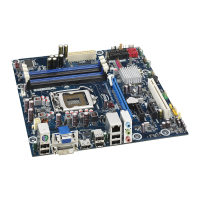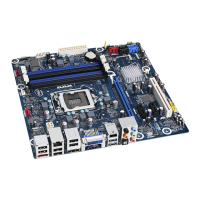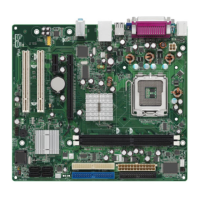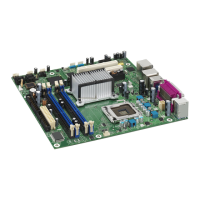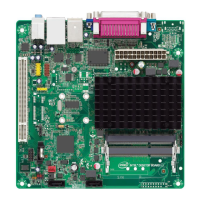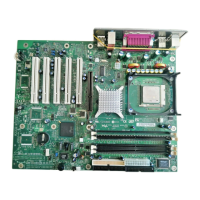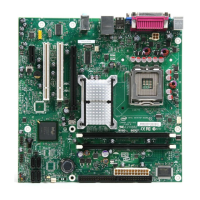Intel
®
440Bx Scalable Performance Board Development Kit Manual 45
BIOS Quick Reference
5.3.3 Configuring IDE Drive Types
If true IDE disk file systems (and not their emulators, such as ROM, RAM, or flash disks) are
mapped to drive letters, then the IDE drives themselves must be configured in this section. The
following table shows the drive assignments for Ide0-Ide3:
To use the primary master IDE drive in your system (the typical case), just configure Ide0 in this
section, and map Ide0 to drive C: in the Configuring Drive Assignments section.
The IDE Drive Types section lets you select the type for each of the four IDE drives: None, User,
Physical, LBA, or CHS.
User This type allows the user to select the maximum cylinders, heads, and
sectors per track associated with the IDE drive. This method is now
rarely used since LBA is now in common use.
Physical This type instructs the BIOS to query the drive’s geometry from the
controller on each POST. No translation on the drive’s geometry is
performed, so this type is limited to drives of 512 Mbytes or less.
Commonly, this is used with embedded ATA PC Cards.
LBA This type instructs the BIOS to query the drive’s geometry from the
controller on each POST, but then translate the geometry according to
the industry-standard LBA convention. This supports up to 16-Gbyte
drives. Use this method for all new drives.
CHS This type instructs the BIOS to query the drive’s geometry from the
controller on each POST, but then translate the geometry according to
the Phoenix CHS convention. Using this type on a drive previously
formatted with LBA or Physical geometry might show data as being
missing or corrupted.
Table 17. IDE0-IDE3 Drive Assignments
File System Name Controller Master/Slave
Ide0 Primary (1f0h) Master
Ide1 Primary (1f0h) Slave
Ide2 Secondary (170h) Master
Ide3 Secondary (170h) Slave

